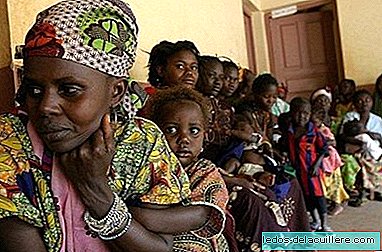
The time of pregnancy and childbirth causes the death of more than half a million women annually in the world. In addition, ten million women suffer serious injuries or disabilities.
This devastating situation does not end in these figures, think of orphans who are exposed to poverty and exploitation.
These data made it necessary for one of the Millennium Development Goals, to meet by 2015, is "Reduce by three quarters, between 1990 and 2015, maternal mortality." Some indicators to achieve this objective are the increase in the proportion of deliveries with the assistance of specialized health personnel, universal access to reproductive health or prenatal care coverage.
The 2008 figures represent a 40% reduction in the maternal mortality ratio since 1980, the first substantial progress in a generation, but much remains to be done to achieve the Objectives.
These data have been known thanks to a study published by the medical journal "The Lancet", based on estimates based on 2,651 observations in 181 countries. Precisely between countries the differences are large.
More than half of the deaths in 2008 occurred in six countries: India, Nigeria, Pakistan, Afghanistan, Ethiopia and the Democratic Republic of the Congo. The study highlights that countries such as Egypt, China, Ecuador and Bolivia are making rapid progress to reduce maternal deaths.
The improvement of data in East Asia has concentrated maternal mortality in sub-Saharan Africa, where the maternal mortality ratio in 2008 exceeds 280 deaths per 100,000 births (in Spain it stood at 7).
The work also highlights the incidence of the HIV virus in deaths related to pregnancy and childbirth, especially in eastern and southern Africa.
At the moment, only 23 of the 181 countries observed are on the way to meet the millennium goal, so you should not lower your guard or reduce efforts.
To reduce mortality rates in the most affected countries, more resources are needed to ensure that most deliveries are attended by trained doctors, nurses or midwives or universal access to reproductive health care, including family planning.
These are measures that in our world we consider as normal, but as we see is far from generalized in many other places.
In short, we are glad to know what they are doing Progress in improving the situation of maternal mortality in the world, especially in places that need it most, developing countries. But that is precisely in those countries where efforts continue to be required to reduce the deaths that could be avoided during pregnancy and childbirth.












